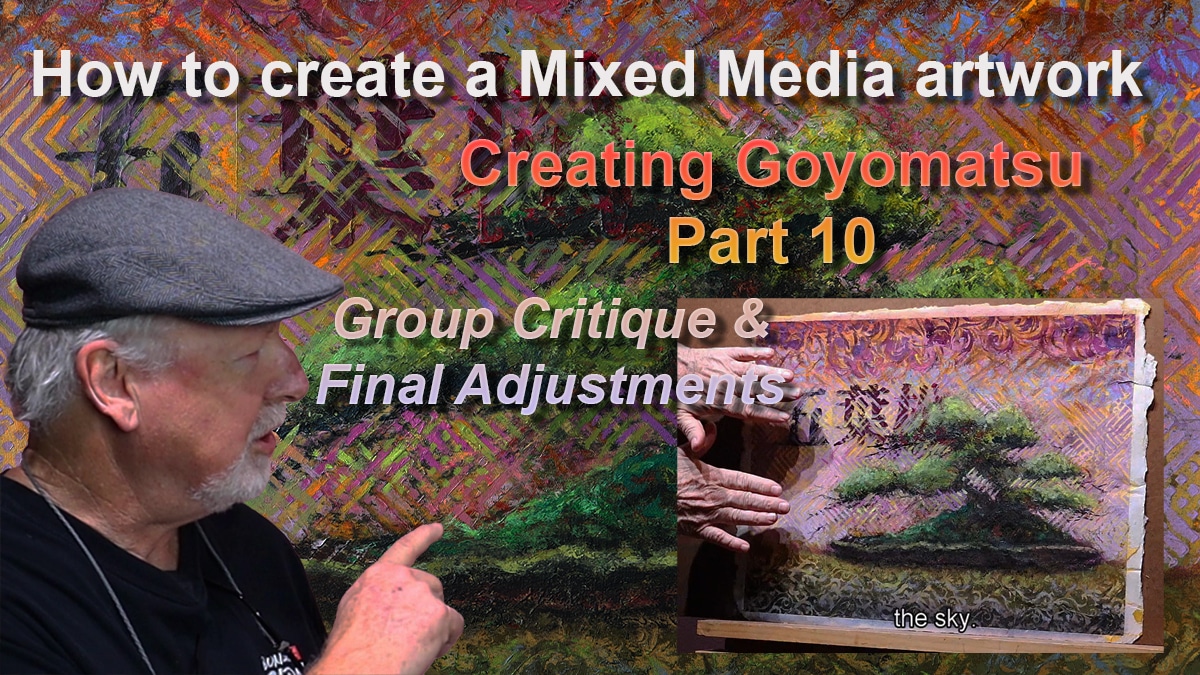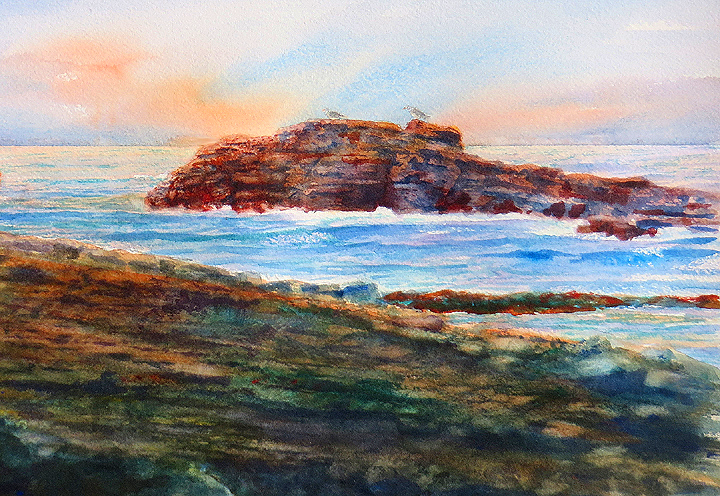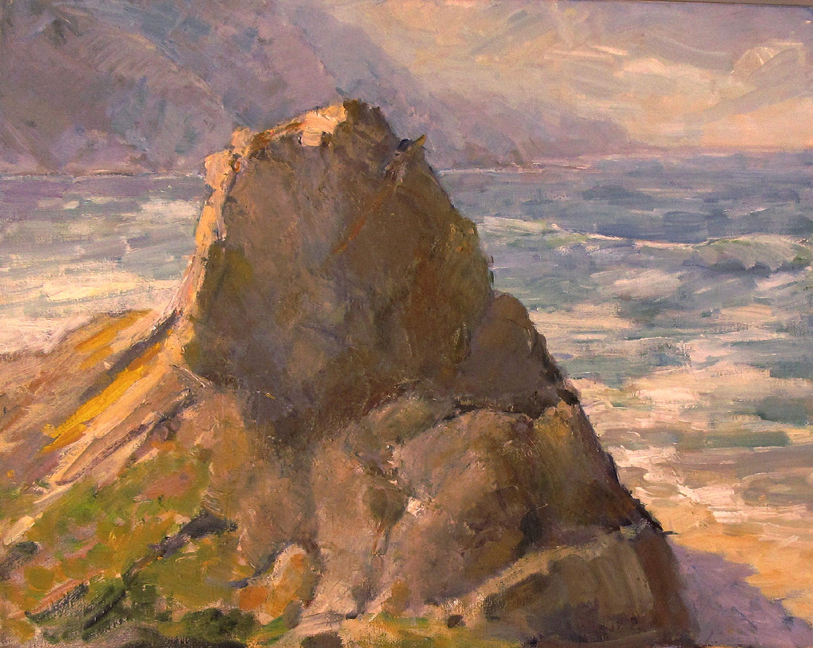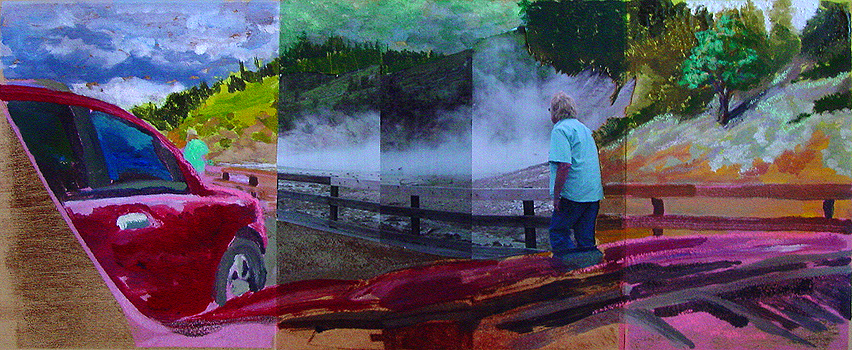
Every artwork reaches a moment where the artist must take a step back. In Part 10 of my Goyomatsu Mixed Media Bonsai Series, I invited a group of trusted artist friends into the studio to share their honest thoughts on the piece. These critique sessions have become an essential part of my process. There’s something invaluable about receiving input from others who can see what I might be too close to recognize—a “third eye” that brings clarity and insight.
Over time, it’s easy to lose perspective. We become so absorbed in our own work that we can miss imbalances or underdeveloped areas. That’s where the critique circle becomes powerful. It’s not just about receiving advice; it’s about engaging in a collaborative exchange with artists who bring their own years of experience and thoughtful observation to the table.
During this critique, we discussed several aspects of the work:
- Color & Pattern Harmony: The group agreed that the color palette was vibrant and well-chosen. They also noted how the stenciled patterns enhanced the background, helping the motif feel unified—so the piece wasn’t just about the tree, but about the space it lives in.
- Gradient & Light: There was appreciation for the vertical gradation from top to center, which strengthens the composition by helping the tree stand out.
- Suggestions for Refinement: It was recommended that I emphasize the trunk and branching structure more clearly and deepen the negative space between the tree’s forms to improve contrast. The light in the background was praised, and it was suggested that subtle adjustments could make it even more effective in highlighting the tree.
From this input, I chose the suggestions that resonated with me—because critique is not about following every suggestion, but about listening for what rings true. I then re-engaged with the painting, setting up my palette, remixing key colors, and working on selected areas including the branches, negative space, and background lighting.
This session helped me bring the painting to a finished state—not by changing its direction, but by enhancing its clarity and cohesion. It was a reminder that honest, thoughtful critique—when done in a safe and supportive space—is one of the most generous gifts artists can offer each other.
The video concludes with a brief preview of Part 11, the final part of this series, where I’ll share how I mount the completed work for display.
I invite you to watch the video and join me in this step of the journey. And if you’re an artist yourself, I encourage you to open your work up to critique. Not every comment will apply—but the conversation is what sharpens your eye and strengthens your voice.
🎥 Watch other Parts on my YouTube Channel: https://www.youtube.com/@rreekers
📷 Instagram: @ronreekers
🌐 Website: www.reekersart.com
💌 Subscribe for blog updates and show announcements
🎨 Become a Patron: patreon.com/ronreekers
🖼 Explore More Blogs:
Visit www.reekersart.com to see the full series, read past blog entries, or explore my other mixed media bonsai works.
























